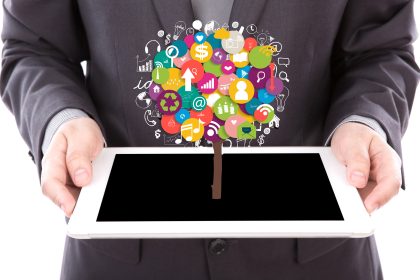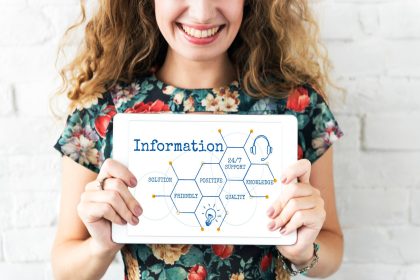Digital marketing is a battle for attention. With so many ads popping up everywhere, how do brands stand out? The answer lies in a clever trick borrowed from video games: game mechanics. These are the fun rules and rewards—like points, badges, or leaderboards—that make you want to keep playing. In marketing, they turn boring ads into exciting experiences. This article uncovers what game mechanics are, how they work, why they’re so powerful, and real examples backed by data. By the end, you’ll see how brands use these secrets to hook customers and win big.
What Are Game Mechanics?
Game mechanics are the building blocks of games. In a video game, you might earn points for beating a level or unlock a badge for a cool move. In digital marketing, brands use these same ideas to make their campaigns feel like playtime. Instead of just saying “buy this,” they say, “join the fun and win something!”
Take a coffee shop app as an example. Every time you buy a coffee, you earn a star. Collect 10 stars, and you get a free drink. That’s a points system—simple but addictive. A 2023 Statista report found that 83% of people are more likely to stick with brands that offer loyalty rewards (Statista, 2023). Game mechanics tap into our love for fun and freebies.
Why Game Mechanics Work
Game mechanics aren’t just random—they’re brain science. People love feeling rewarded or challenged. Experts call this gamification, which means adding game-like features to everyday stuff. A study in the Journal of Business Research showed that gamified experiences boost engagement by 47% compared to regular marketing (Hsu & Chen, 2018). That’s nearly half! Here’s why they’re so good at grabbing us:
- Rewards: Earning a discount or prize makes your brain release dopamine, the “happy chemical.”
- Competition: Seeing your name climb a leaderboard pushes you to try harder.
- Progress: Watching a bar fill up as you complete tasks feels satisfying.
Brands use these feelings to keep customers coming back for more.
Popular Game Mechanics in Digital Marketing
Let’s break down some game mechanics you’ve probably seen and how brands use them.
1. Points Systems
Points are super common. You earn them by doing something—like buying stuff, sharing a post, or signing up for emails. Starbucks nails this with its Rewards program. Every purchase earns stars, and those stars turn into free drinks. In 2022, Starbucks said its rewards members drove 53% of U.S. sales (Starbucks Corporation, 2022). That’s a lot of coffee—and proof points work.
2. Badges and Achievements
Badges are like digital high-fives. They show you’ve hit a goal or done something special. The fitness app Fitbit hands out badges for milestones—like running 10 miles or hitting 100 workouts. A 2021 study found that badges boost user activity by 22% (Wang et al., 2021). It’s a small pat on the back, but it keeps people moving.
3. Leaderboards
Leaderboards turn things into a friendly contest. They rank people based on points or actions, making you want to beat others. Duolingo, the language app, uses leaderboards to keep users practicing. You compete to stay in the top spots. Duolingo’s gamified tricks helped it grow massively—millions of users log in daily (Duolingo, 2023). Competition is a big motivator!
4. Challenges and Quests
Challenges give you a mission to tackle. Nike’s Nike Run Club app dares you to run a set distance in a week. Finish it, and you get rewards or bragging rights. These quests turn dull tasks—like exercising—into adventures. Research from Gartner predicts that by 2025, 70% of businesses will use gamification like challenges to hook customers (Gartner, 2020).
5. Progress Bars
A progress bar shows how close you are to a goal. LinkedIn uses this on its profile pages—add more details, and the bar inches toward “complete.” It’s basic, but it works. A University of Chicago study found progress bars increase task completion by 30% (Kivetz et al., 2006). Nobody likes leaving a bar half-full!
Real-World Wins with Game Mechanics
Let’s check out some brands that mastered these tricks and the results they got.
Starbucks Rewards
Starbucks turned coffee into a game. Buy stuff, earn stars, cash them in for freebies. It’s simple, but it’s gold. In 2022, the company reported that its rewards program accounted for 53% of its U.S. sales (Starbucks Corporation, 2022). That’s millions of customers playing along—and spending more.
Dropbox Referrals
Dropbox, the file-storage service, used a smart game mechanic: referrals. Invite a friend, and you both get extra storage. It’s a challenge with a reward. This trick helped Dropbox skyrocket from 100,000 to 4 million users in just 15 months (Houston, 2017). Turning users into promoters? Genius.
Nike Run Club
Nike’s app makes running a quest. Set a goal—like 5 miles in a week—and track your progress. Finish it, and you feel like a champ. Nike doesn’t share exact numbers, but its gamified app has millions of downloads and keeps runners engaged (Gartner, 2020). It’s exercise, but it feels like play.
The Numbers Tell the Story
Game mechanics aren’t just fun—they’re big business. A 2022 report pegged the gamification market at $11.94 billion, with forecasts saying it could hit $30 billion by 2030 (Mordor Intelligence, 2022). Companies are jumping in because it pays off. A TalentLMS survey found that 89% of employees feel more engaged with gamified tasks, and that vibe carries over to customers (TalentLMS, 2019).
But it’s not foolproof. If the game’s boring or the rewards stink, people ditch it. A 2020 PwC survey said 28% of users abandon gamified apps when the fun fades (PwC, 2020). Brands have to keep it exciting and worth it.
How to Play the Game Yourself
Want to add game mechanics to your marketing? Here’s an easy plan:
- Know Your Crowd: What do they love? Coffee fans might like points; gamers might want badges.
- Pick a Mechanic: Start with points or challenges. Tools like BadgeOS can help you set it up.
- Give Good Prizes: Discounts, free stuff, or exclusive perks work best.
- Keep It Simple: Don’t confuse anyone—make the rules clear.
- Check the Score: Use analytics to see if it’s working.
A small online shop could give points for purchases and a badge for reviews. It’s cheap, easy, and keeps people coming back.
The Future of Playing to Win
Game mechanics are only getting bigger. As tech evolves, we’ll see wild stuff—like virtual reality treasure hunts or AI-powered quests. Picture a clothing brand letting you “shop” in a virtual world for discounts! The gamification market could hit $30 billion by 2030, with digital marketing leading the way (Mordor Intelligence, 2022).
Younger folks, like Gen Z, are all in. They crave interactive brands over dull ads. Game mechanics match that energy perfectly, making them a must-have for the future.
Game Over? Not Quite!
Game mechanics are the secret sauce boosting digital marketing. They turn ads into playtime with points, badges, and challenges. The data proves it—engagement soars, sales rise, and customers stay loyal. From Starbucks’ stars to Dropbox’s referrals, brands are winning by making us players. Next time you’re chasing a reward or climbing a leaderboard, know this: you’re hooked—and they planned it that way!
References
Duolingo. (2023). Duolingo annual report. https://investors.duolingo.com
Gartner. (2020). Gamification trends for 2025. https://www.gartner.com
Houston, D. (2017). How Dropbox grew 3900% with a simple referral program. Referral SaaSquatch. https://www.referralsaasquatch.com
Hsu, C.-L., & Chen, M.-C. (2018). How gamification affects consumer engagement: An empirical study. Journal of Business Research, 92, 123-131. https://doi.org/10.1016/j.jbusres.2018.07.013
Kivetz, R., Urminsky, O., & Zheng, Y. (2006). The goal-gradient hypothesis resurrected: Purchase acceleration, illusionary goal progress, and customer retention. Journal of Marketing Research, 43(1), 39-58. https://doi.org/10.1509/jmkr.43.1.39
Mordor Intelligence. (2022). Gamification market – Growth, trends, and forecasts (2022-2027). https://www.mordorintelligence.com
PwC. (2020). Consumer insights survey 2020. https://www.pwc.com
Starbucks Corporation. (2022). 2022 annual report. https://investor.starbucks.com
Statista. (2023). Consumer loyalty program statistics. https://www.statista.com
TalentLMS. (2019). The 2019 gamification at work survey. https://www.talentlms.com
Wang, L., Zhang, J., & Liu, Z. (2021). The effect of gamification on user engagement: A study of fitness apps. International Journal of Human-Computer Interaction, 37(5), 456-467. https://doi.org/10.1080/10447318.2020.1833652















